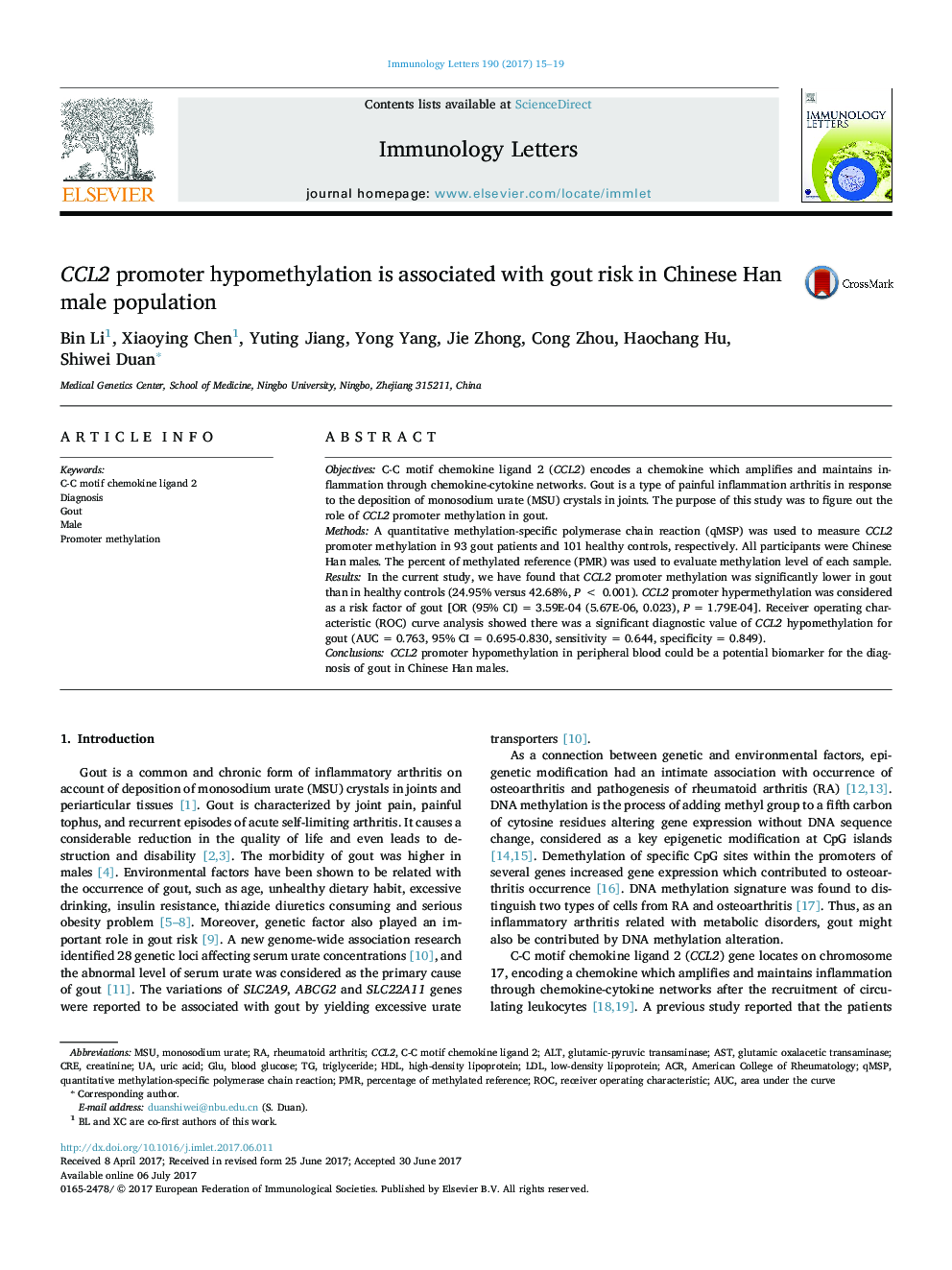| Article ID | Journal | Published Year | Pages | File Type |
|---|---|---|---|---|
| 5666554 | Immunology Letters | 2017 | 5 Pages |
â¢CCL2 promoter methylation was significantly decreased in the gout cases.â¢The area under the curve (AUC) of CCL2 promoter hypomethylation was 0.763.â¢Gout was associated with five indexes including UA, AST, HDL, LDL and WBC.
ObjectivesC-C motif chemokine ligand 2 (CCL2) encodes a chemokine which amplifies and maintains inflammation through chemokine-cytokine networks. Gout is a type of painful inflammation arthritis in response to the deposition of monosodium urate (MSU) crystals in joints. The purpose of this study was to figure out the role of CCL2 promoter methylation in gout.MethodsA quantitative methylation-specific polymerase chain reaction (qMSP) was used to measure CCL2 promoter methylation in 93 gout patients and 101 healthy controls, respectively. All participants were Chinese Han males. The percent of methylated reference (PMR) was used to evaluate methylation level of each sample.ResultsIn the current study, we have found that CCL2 promoter methylation was significantly lower in gout than in healthy controls (24.95% versus 42.68%, P < 0.001). CCL2 promoter hypermethylation was considered as a risk factor of gout [OR (95% CI) = 3.59E-04 (5.67E-06, 0.023), P = 1.79E-04]. Receiver operating characteristic (ROC) curve analysis showed there was a significant diagnostic value of CCL2 hypomethylation for gout (AUC = 0.763, 95% CI = 0.695-0.830, sensitivity = 0.644, specificity = 0.849).ConclusionsCCL2 promoter hypomethylation in peripheral blood could be a potential biomarker for the diagnosis of gout in Chinese Han males.
